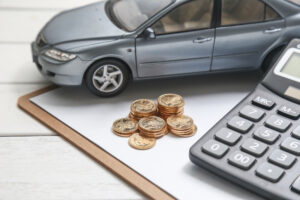It’s all very well to find a car that you both like and can afford, but you also need to understand all the financial jargon that comes with making the purchase.
There is no shame in admitting you don’t know what a balloon payment is, or the difference between fixed and linked interest rates. While all these terms can be intimidating the first-time round, doing research will ensure you get the best financial deal on your set of wheels.
Before you get to the part where you drive off in your car, let’s get back to understanding the payment deal to make sure you sign up for the best financial plan that suits your needs and more importantly, your pocket.
“Car ownership is more than the initial price tag. A customer will need to consider monthly repayments, plus the added costs of fuel, comprehensive insurance cover and general maintenance and service expenses when buying a car.”
– Kutlwano Mogatusi, WesBank Motor’s Communication Specialist.
Here’s the first of our 2-part guide to understanding vehicle finance jargon which will help you make the right choices:
1. Interest rate: The interest rate affects the amount a bank charges you for borrowing money and the amount you need to pay back is determined by the interest rate on your finance agreement. The current low interest rate is good news for anyone repaying a vehicle finance loan.
2. Fixed or linked interest rate: You can choose between a fixed or linked (variable) interest rate on your vehicle finance agreement. As it says, a fixed interest rate remains the same, as does your monthly instalment. A linked rate fluctuates with the prime interest rate set by the South African Reserve Bank – if the rate increases, so will your payment but if the rate goes down, you will benefit from a lower monthly payment.
3. Deposit: This is a cash amount you pay upfront before the vehicle finance agreement starts. This amount is deducted from the price tag, so it makes sense that the bigger the deposit you can pay, the less you will owe on the car in the long run.
4. Finance period: The finance period is the length of time you agree to in the contract to pay off the car. It affects your monthly instalment and interest amount. A longer period may mean a lower instalment but the interest adds up so you could end up paying more. A shorter payment period might incur a slightly higher monthly payment but lessens the interest paid out in the long term, which is a good thing.
5. Balloon payment: A balloon payment is a lump sum amount that still needs to be paid at the end of the vehicle finance contract. So, on the upside, while it reduces your monthly instalment for the contract period, you will need to settle it in full at the end, so be cautious of this payment option. Because you may end up paying more interest in total in the long term, you need to make sure you have budgeted and saved enough to pay off the outstanding balloon payment. This amount however can now be refinanced, which will extend your term to pay back the car loan.
“Now that you understand the jargon and consider yourself to be vehicle finance savvy, all that’s left is to check the vehicle finance agreement, including the small print, and sign on the dotted line – but, only once you’re satisfied with all the terms and conditions. Then, you are ready to safely take to the open road in your very own car,” says Mogatusi.






